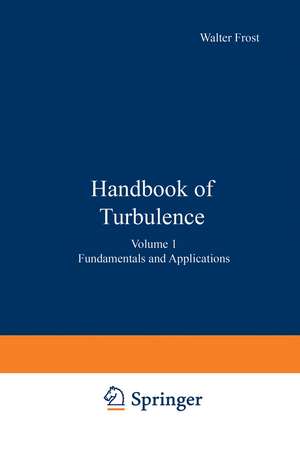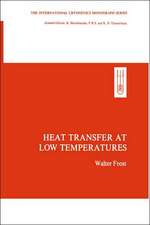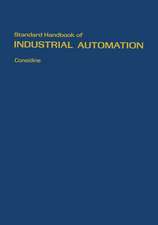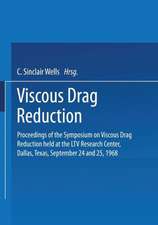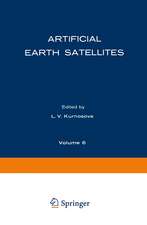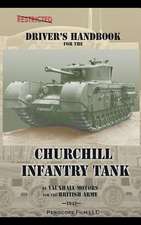Handbook of Turbulence: Volume 1 Fundamentals and Applications
Editat de Walter Frosten Limba Engleză Paperback – 8 mar 2012
Preț: 650.19 lei
Preț vechi: 764.93 lei
-15% Nou
Puncte Express: 975
Preț estimativ în valută:
124.41€ • 129.91$ • 102.74£
124.41€ • 129.91$ • 102.74£
Carte tipărită la comandă
Livrare economică 16-30 aprilie
Preluare comenzi: 021 569.72.76
Specificații
ISBN-13: 9781468423242
ISBN-10: 146842324X
Pagini: 520
Ilustrații: XVIII, 498 p.
Dimensiuni: 152 x 229 x 27 mm
Greutate: 0.69 kg
Ediția:Softcover reprint of the original 1st ed. 1977
Editura: Springer Us
Colecția Springer
Locul publicării:New York, NY, United States
ISBN-10: 146842324X
Pagini: 520
Ilustrații: XVIII, 498 p.
Dimensiuni: 152 x 229 x 27 mm
Greutate: 0.69 kg
Ediția:Softcover reprint of the original 1st ed. 1977
Editura: Springer Us
Colecția Springer
Locul publicării:New York, NY, United States
Public țintă
ResearchCuprins
1 The Complexity of Turbulent Fluid Motion.- 1.1. Introduction.- 1.2. On Continuum Fluid Motion.- 1.3. Further Remarks on Turbulence.- 1.4. Looking Onward.- References.- 2 An Introduction to Turbulence Phenomena.- 2.1. Introduction.- 2.2. On the Basic Equations of Motion.- 2.3. Reynolds’ Decomposition.- 2.4. Correlations and the Closure Condition.- 2.5. The Turbulent Boundary Layer.- 2.6. Final Remarks.- References.- 3 Statistical Concepts of Turbulence.- 3.1. Basic Physical Model of Turbulence.- 3.2. Statistical Definitions.- 3.3. Statistical Moments.- References.- 4 Spectral Theory of Turbulence.- 4.1. Introduction.- 4.2. Harmonic Analysis.- 4.3. Frequency Spectra.- 4.4. Wave-Number Spectra.- 4.5. Characteristics of Energy Spectra.- References.- 5 Turbulence: Diffusion, Statistics, Spectral Dynamics.- 5.1. Introduction.- 5.2. Turbulent Diffusion.- 5.3. Fourier Transforms.- 5.4. Particle Diffusion.- 5.5. Another Look at Fourier Transforms.- 5.6. On the Interpretation of Frequency.- 5.7. Strong Interactions.- 5.8. Vorticity and Velocity.- 5.9. The “First Law” of Turbulence.- 5.10. The Energy Cascade.- 5.11. Some Enlightening Errors.- 5.12. Other Inertial Ranges.- 5.13. Turbulent Diffusion Revisited.- 5.14. Conclusions.- References.- 6 Transition.- 6.1. Introduction.- 6.2. Weak Oscillations of Simple Flow.- 6.3. Multiple Perturbations of Laminar Flow.- 6.4. Amplification of Initial Perturbations.- 6.5. Strong Disturbances of Simple Flows.- 6.6. Statistical Models.- 6.7. Comment.- References.- 7 Turbulence Processes and Simple Closure Schemes.- 7.1. Introduction.- 7.2. Theoretical Development.- 7.3. Final Remarks.- References.- 8 Kinetic Energy Methods.- 8.1. Introduction.- 8.2. Eddy Viscosity Transport Models.- 8.3. Turbulent Kinetic Energy Models.- 8.4. Summaryand Conclusions.- References.- 9 Use of Invariant Modeling.- 9.1. Introduction.- 9.2. Model Development.- 9.3. Evaluation of Model Coefficients.- 9.4. Model Verification.- 9.5. Local Equilibrium Approximations.- 9.6. Applications.- 9.7. Concluding Remarks.- References.- 10 Numerical Simulation of Turbulent Flows.- 10.1. Introduction.- 10.2. Methods.- 10.3. Problems.- 10.4. Survey of Applications.- 10.5. Comparison with Other Methods.- 10.6. Prospects.- References.- 11 Laboratory Instrumentation in Turbulence Measurements.- 11.1. Introduction.- 11.2. Measurement of Velocity Fluctuations.- 11.3. Measurement of Temperature Fluctuations.- 11.4. Measurement of Density and Pressure Fluctuations.- 11.5. Measurement of Concentration Fluctuations.- 11.6. Measurement of Surface Shear Fluctuations.- References.- 12 Techniques for Measuring Atmospheric Turbulence.- 12.1. Introduction.- 12.2. Measurements: Background, Instruments, Platforms, and Techniques.- 12.3. Measurements from Aircraft.- 12.4. Aircraft Measurement of Turbulent Airflow Downwind of a Mountain Range.- 12.5. Elk Mountain PBL Profiles.- 12.6. Suppression of Mixing Coefficient by Forced Boundary-Layer Upward Curvature.- 12.7. Turbulent Airflow across a Building.- 12.8. Concluding Remarks.- References.- 13 Optical and Acoustical Measuring Techniques.- 13.1. Introduction.- 13.2. Background and Basic Principles.- 13.3. Laser Doppler.- 13.4. Acoustic Doppler.- References.- 14 Monte Carlo Turbulence Simulation.- 14.1. Introduction.- 14.2. Control-System Simulation.- 14.3. Use of Standard System Function Elements.- 14.4. Digital Filter Simulation.- 14.5. Discrete Fourier Series.- 14.6. Non-Gaussian Simulation.- 14.7. Multidimensional Simulation.- 14.8. Nonhomogeneous Atmospheric Boundary-Layer Simulation.- 14.9. Self-Similar Simulation.- 114.10. Conclusions.- References.- 15 Wind, Turbulence, and Buildings.- Author Index.
